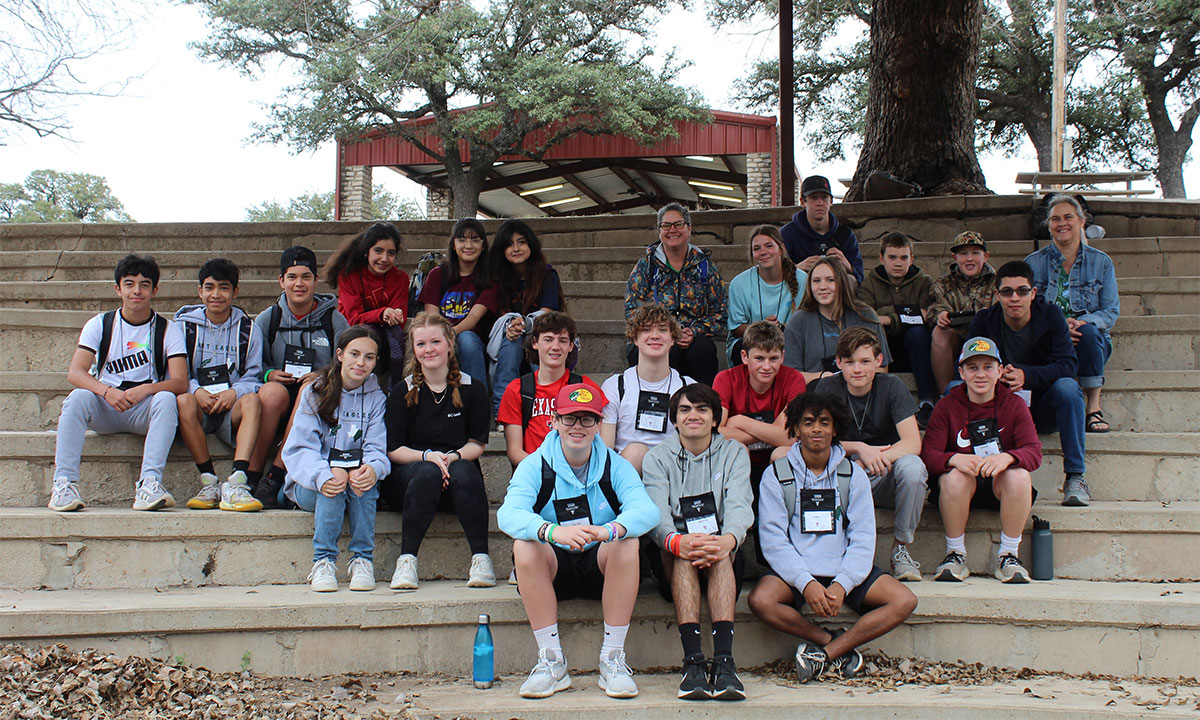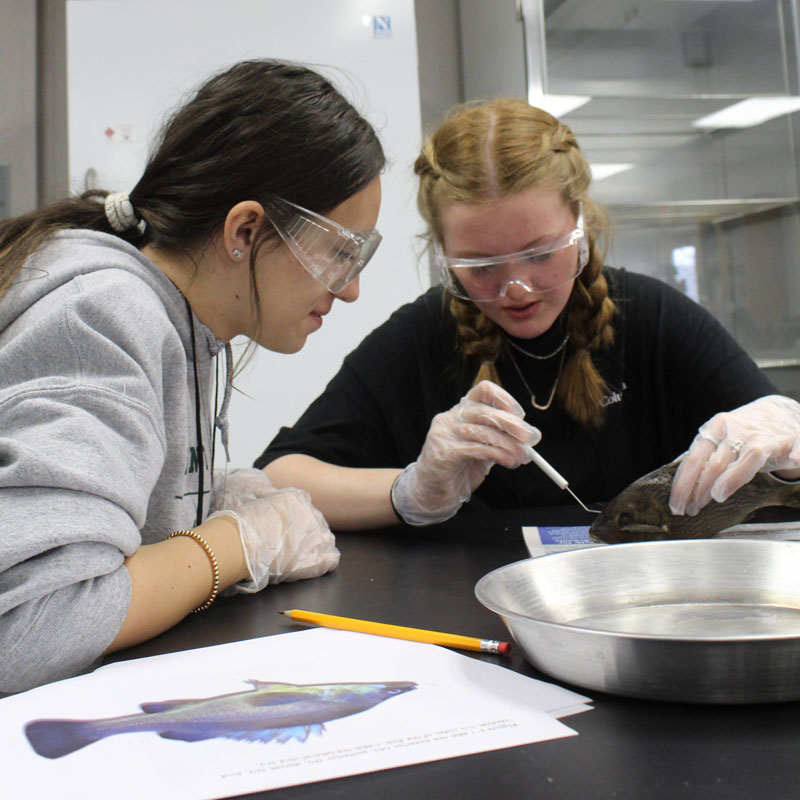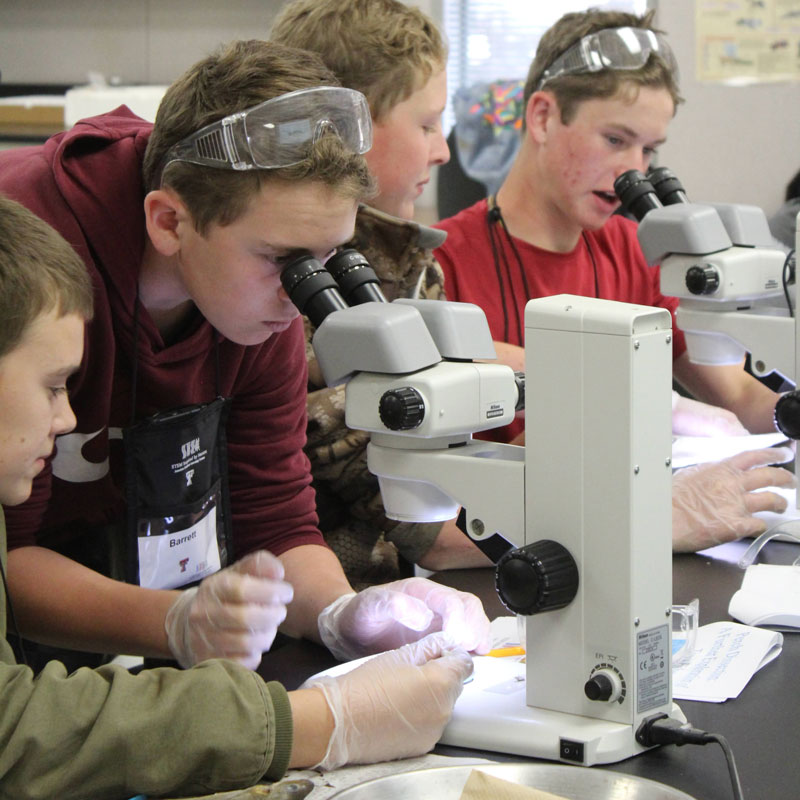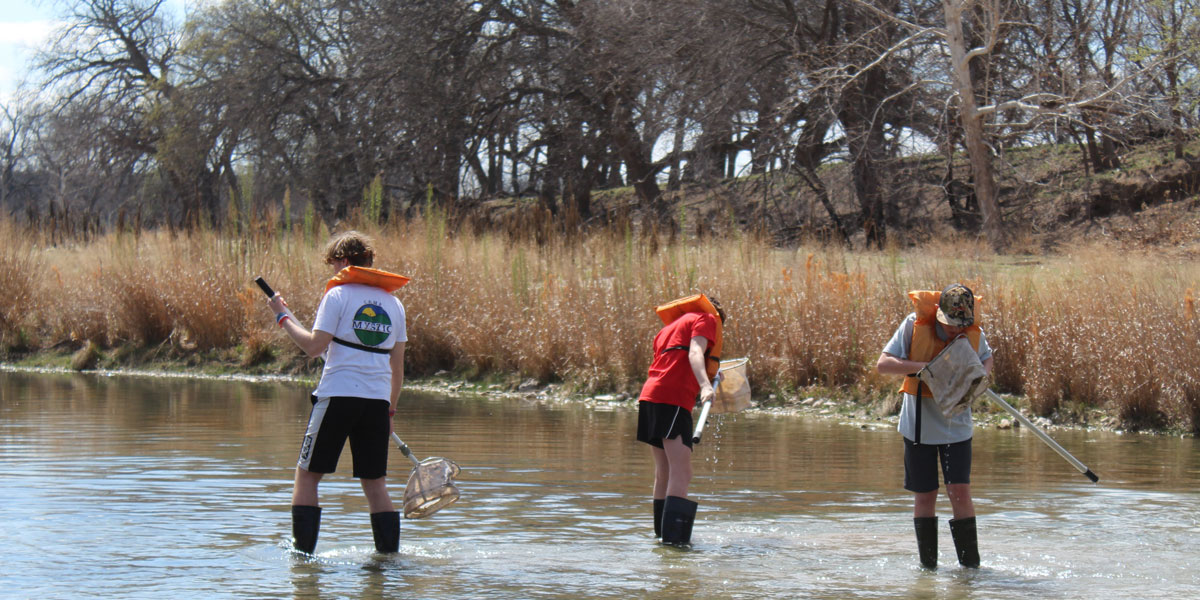
Eighth graders from one of TTU K-12’s community partner schools at Texas Tech’s Outdoor
Learning Center in Junction.
Biology Students Experience Hands-on Learning at TTU Center in Junction.

Students examine fish anatomy in a lab.
By Leslie Cranford, Section Manager
Sometimes “Wherever you are” happens to be really close. With the Texas Tech University Center at Junction less than 100 miles from the community of Hunt, it was a great opportunity for Hunt Independent School District, which already partners with TTU K-12, to plan a science field trip for some of its middle school students.
“For the eighth graders taking biology with our TTU K-12 academic partnership program, they are able to see and experience so many great things,” said Brett Mosley, TTU K-12 science teacher and director of the Outdoor Learning Center (OLC). “They can earn high school credit before entering their freshman high school year. They get an outstanding academic program through TTU K-12, and this year they got to spend the day learning at the OLC.”

Students examine fish anatomy in a lab.
For more than 20 years, the OLC has provided science learning in nature to students locally, statewide and internationally. With the Hunt students being a little more than an hour away, it was a great opportunity for them to make the trip to spend the day building on what they learned in biology this spring.
Faith Bradberry, eighth-grade science teacher at Hunt ISD, said her students look forward to the Junction field trip each year.
“The lessons are organized and managed perfectly to provide outstanding hands-on learning for our fifth- and eighth-grade science students in a spectacular setting,” Bradberry said. “It's the best field trip ever!"
At the OLC, Mosley said real learning happens with the experience of doing something.

Students examine microscopic river life.

Students examine microscopic river life.
“Our first class took us to the Lantana Lab located at the TTU Center to do an aquatic vertebrate study,” Mosley said. “The Hunt students got a chance to work in a real Texas Tech research lab doing an anatomical study of the Osteichthyes class of fish. Observing the scales and gill filaments under magnification was an awe-inspiring event for this part of the class.”
With dissection tools in hand, the students then identified and studied the internal structures of their specimen, Mosley explained. While sharing some similar organs to mammals, such as stomach and liver, it was the unique internal structures that led their study.
“Swim bladders were identified and their functions discussed. The two-chambered heart found in the fish was compared to the function of our four-chambered heart,” Mosley explained. “The brain, nervous system and optic nerves led to some interesting discussions on how sensory organs play such a large role in the survival of a fish in its environment. Learning the structures of organisms gave these students insight on how it fits in its ecological niche, a big part of any biology class.”
Coming to the OLC means getting outside to do some science, and that is where the Hunt students’ next class took them in the afternoon.

Students collecting specimens from the South Llano River.
“Having the South Llano River flowing through the Texas Tech Center really lends itself to a unique opportunity to study water quality and the life that resides in rivers,” Mosley said. “The Hunt students discussed how pH can play such a role in the health of a river and all the things that contribute to clean water. Another aspect of a healthy river system are the aquatic macroinvertebrates that are found living there. By learning about which macroinvertebrates can tolerate pollutants and which cannot, they were ready to do some biomonitoring.”
By donning rubber boots and each grabbing a D-net, the students spent the afternoon collecting a diversity of creatures residing in South Llano River. The students collected a number of stonefly larva, mayfly larva, dragonfly nymphs, crawfish and damselfly nymphs. With these species and the chemical analysis performed, the students concluded that this was a good indicator of a healthy river and clean water.
“Doing the real-world studies was a hit with the students,” Mosley added. “Getting into the river was not so bad either. Some future Red Raider biologists may have been inspired by this educational trip!”
Texas Tech K-12
-
Address
Texas Tech Plaza | 1901 University Ave, Lubbock, TX 79401 -
Phone
(800) 692-6877 -
Email
ttuk12@ttu.edu
